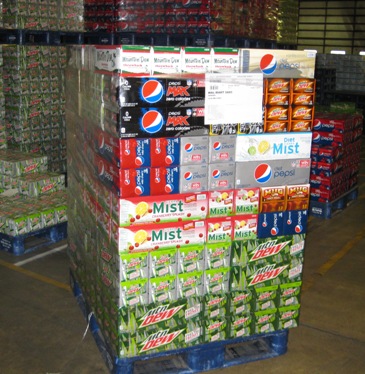San Antonio’s City Council approved a pilot organic waste program last week that could divert 9,000 tons of waste in its first year.
Next month, 30,000 households across four council districts will receive “green carts” for compostable waste as part of the Organic Material Recovery Program.
These green carts will accept yard trimmings, food scraps, food-soiled paper and uncommon compostables like cotton balls, dryer lint and sawdust.
The new program is part of the city’s 10-year plan to divert 60 percent of its waste by 2020. City officials expect to make significant progress towards this goal by collecting an estimated 9,000 tons of organic waste in the pilot’s first year.
Although the council ultimately voted 10-1 to approve, the high cost of the program raised concern for some council members, according to an article published last week by The San Antonio Express-News.
The new bins alone cost $1.8 million, and the city will pay a local waste management company up to $195,000 as part of a one-year deal to collect and transport organics.
If the program is expanded, officials estimate that the cost of carts and transportation could reach $33 million over five years.
Many city officials are confident that revenue from compost will offset costs. But some remained unconvinced that the program is an efficient use of taxpayer dollars – especially since it will be partially funded by solid waste rate increases.
In addition to high prices, some council members said questions of convenience and sanitation made constituents wary of the program.
San Antonio residents already use two carts for trash and recyclables, and some said that another cart would only further clutter their streets and alleyways.
Additionally, some residents worried that leaving organic waste outside during the hot summer months would result in icky smells and outrageous bug problems that could pose a threat to public health.
Some council members sought to delay the vote while concerns were mulled over. But Mayor Julian Castro, who is a supporter of the program, said that funds were allocated for organic waste diversion last year and costs shouldn’t keep the council from moving forward.
The performance of the pilot program will be tracked over the first year.
Pending city council approval, organic waste diversion programs will be instated city-wide by 2014, officials said.
Supporters noted that approving the pilot program does not oblige the council to continue with additional phases if performance standards are not met.
Article by Mary Mazzoni, Earth 911
Next month, 30,000 households across four council districts will receive “green carts” for compostable waste as part of the Organic Material Recovery Program.
These green carts will accept yard trimmings, food scraps, food-soiled paper and uncommon compostables like cotton balls, dryer lint and sawdust.
The new program is part of the city’s 10-year plan to divert 60 percent of its waste by 2020. City officials expect to make significant progress towards this goal by collecting an estimated 9,000 tons of organic waste in the pilot’s first year.
Although the council ultimately voted 10-1 to approve, the high cost of the program raised concern for some council members, according to an article published last week by The San Antonio Express-News.
The new bins alone cost $1.8 million, and the city will pay a local waste management company up to $195,000 as part of a one-year deal to collect and transport organics.
If the program is expanded, officials estimate that the cost of carts and transportation could reach $33 million over five years.
Many city officials are confident that revenue from compost will offset costs. But some remained unconvinced that the program is an efficient use of taxpayer dollars – especially since it will be partially funded by solid waste rate increases.
In addition to high prices, some council members said questions of convenience and sanitation made constituents wary of the program.
San Antonio residents already use two carts for trash and recyclables, and some said that another cart would only further clutter their streets and alleyways.
Additionally, some residents worried that leaving organic waste outside during the hot summer months would result in icky smells and outrageous bug problems that could pose a threat to public health.
Some council members sought to delay the vote while concerns were mulled over. But Mayor Julian Castro, who is a supporter of the program, said that funds were allocated for organic waste diversion last year and costs shouldn’t keep the council from moving forward.
The performance of the pilot program will be tracked over the first year.
Pending city council approval, organic waste diversion programs will be instated city-wide by 2014, officials said.
Supporters noted that approving the pilot program does not oblige the council to continue with additional phases if performance standards are not met.
Article by Mary Mazzoni, Earth 911






